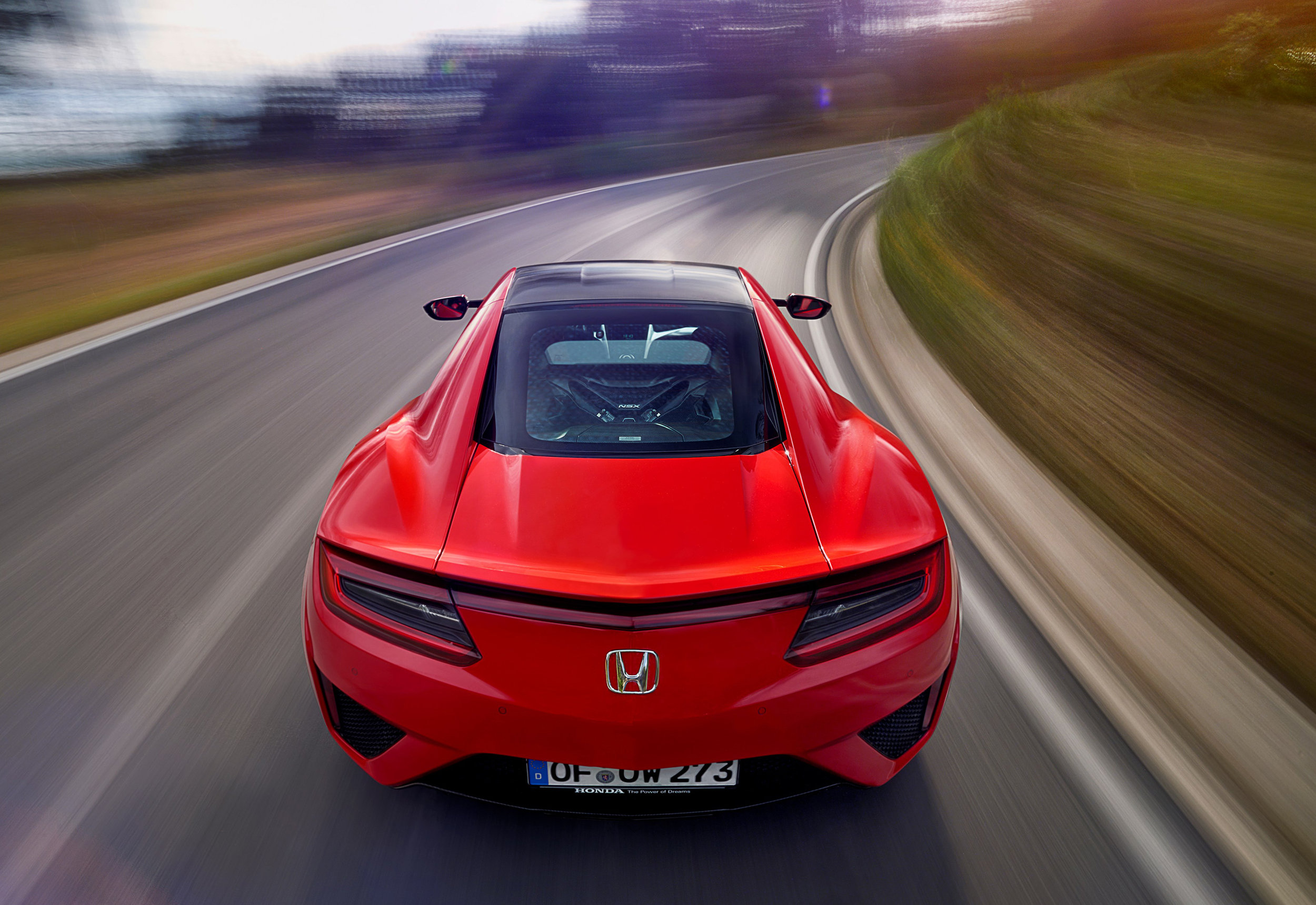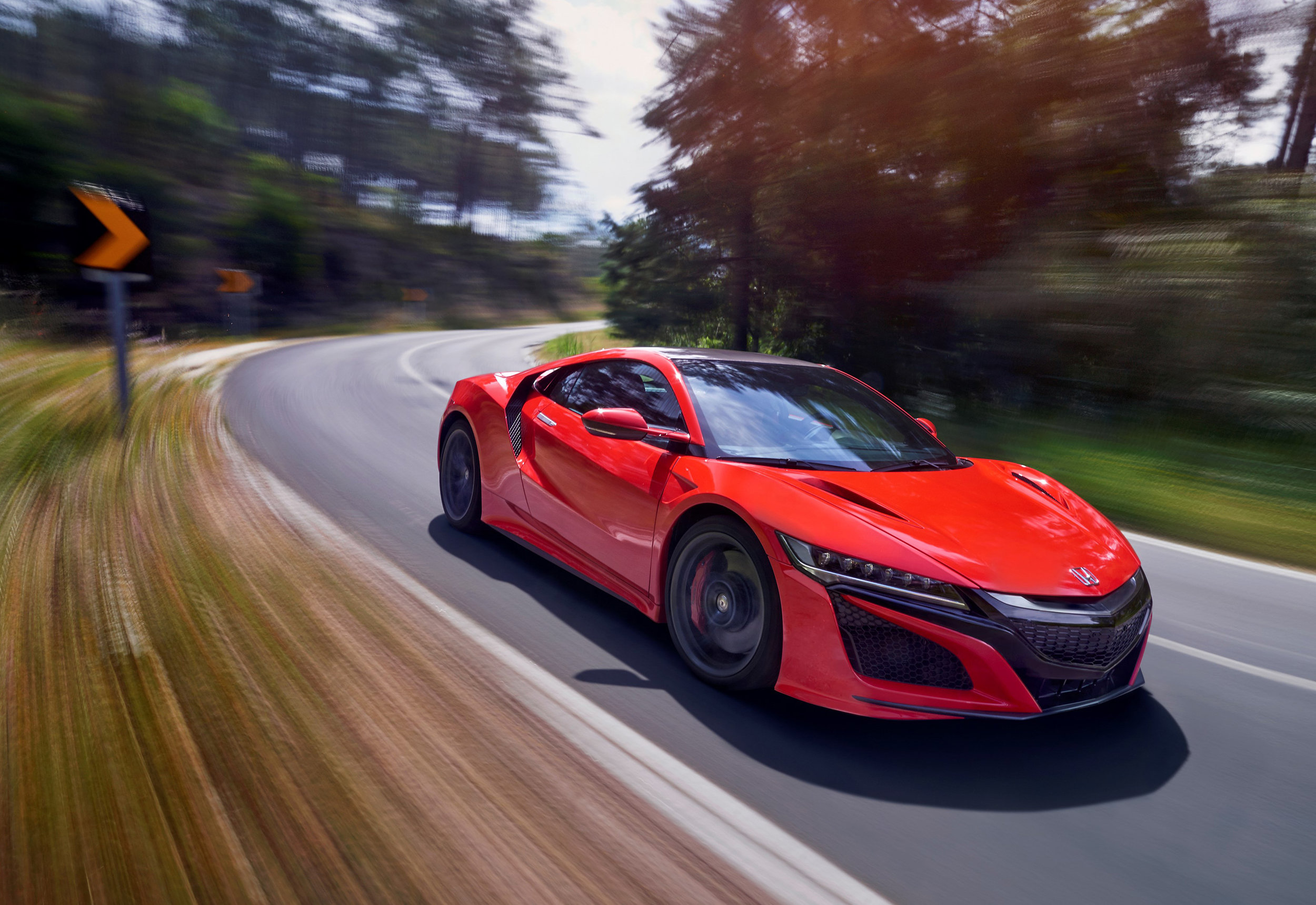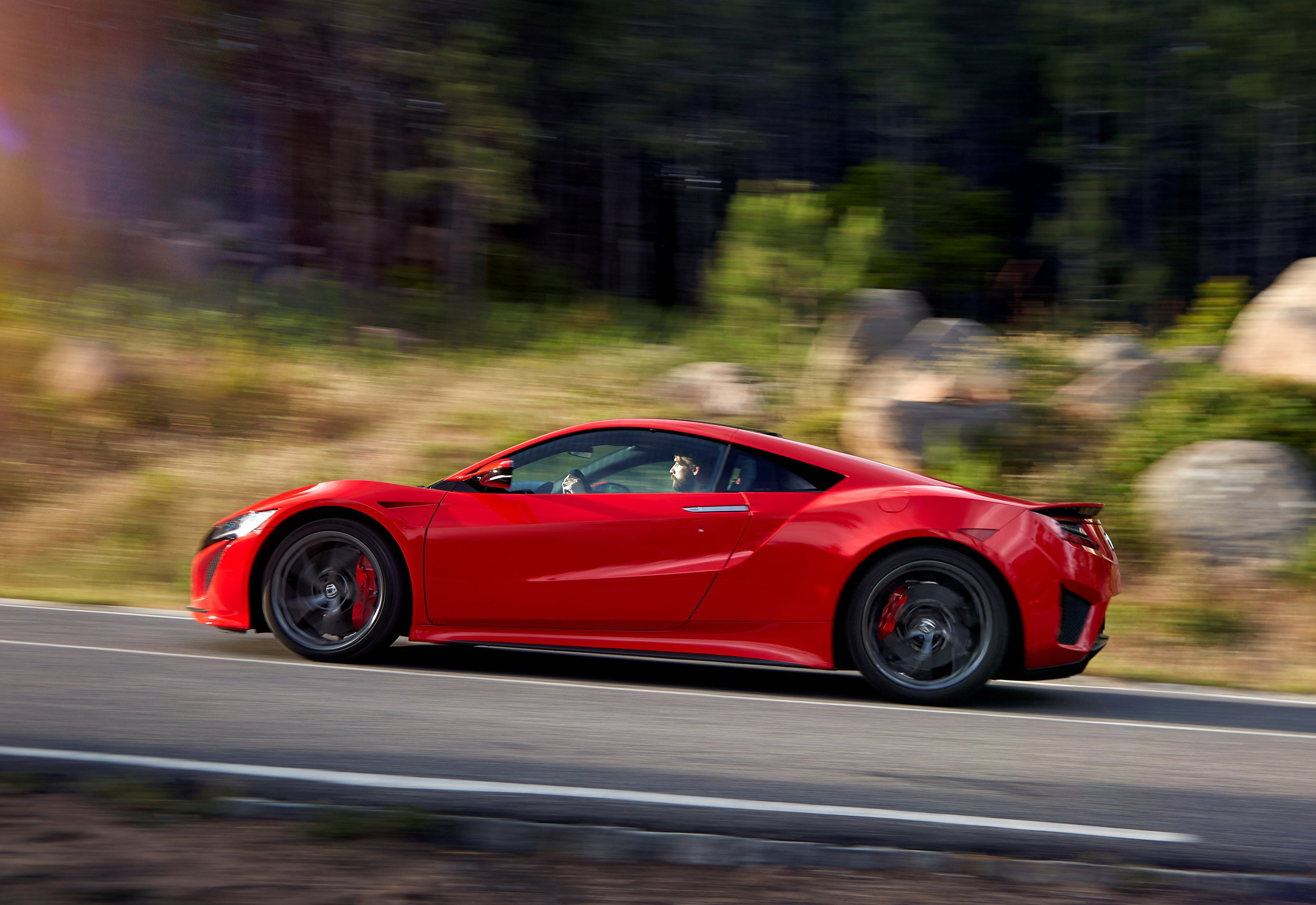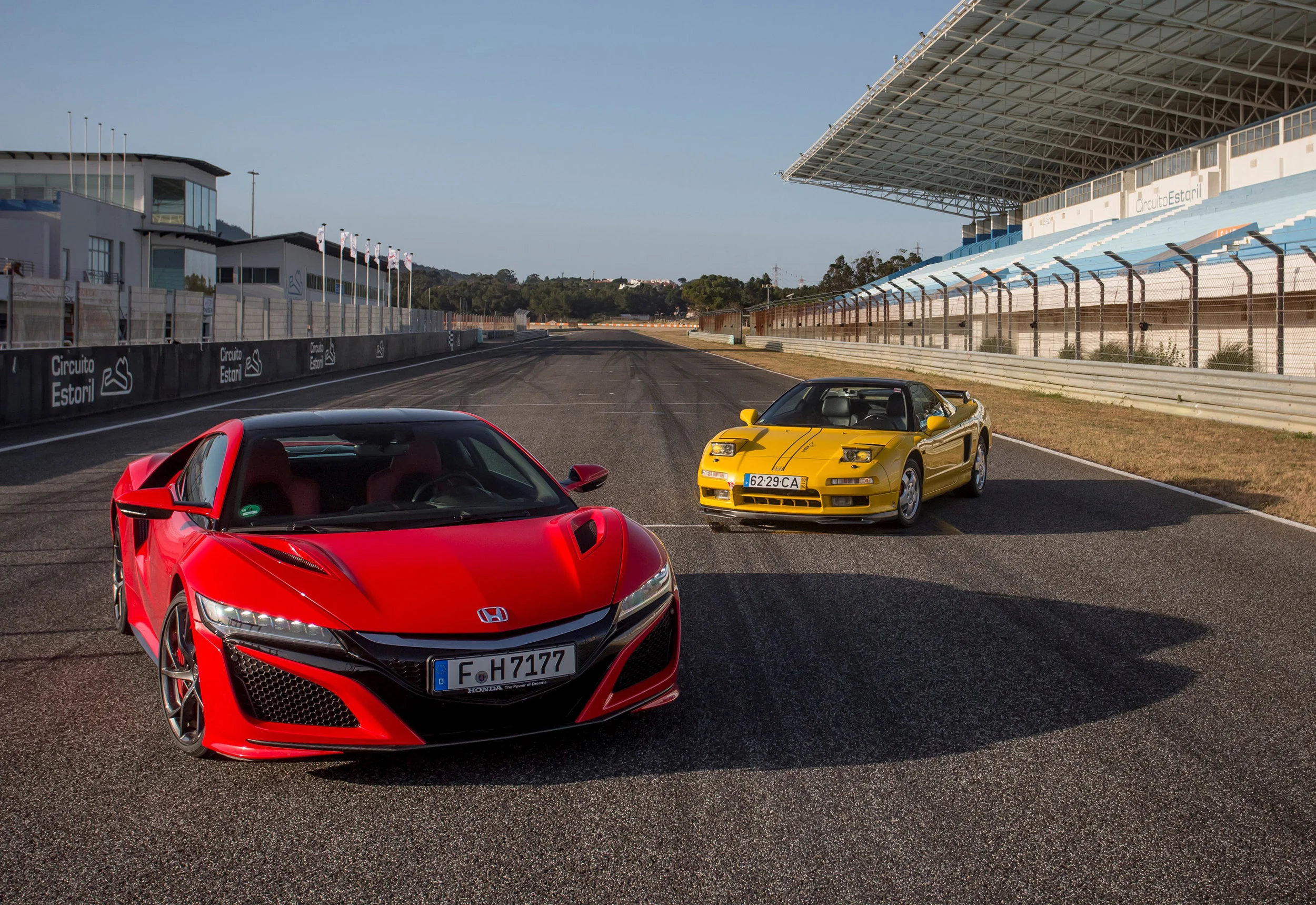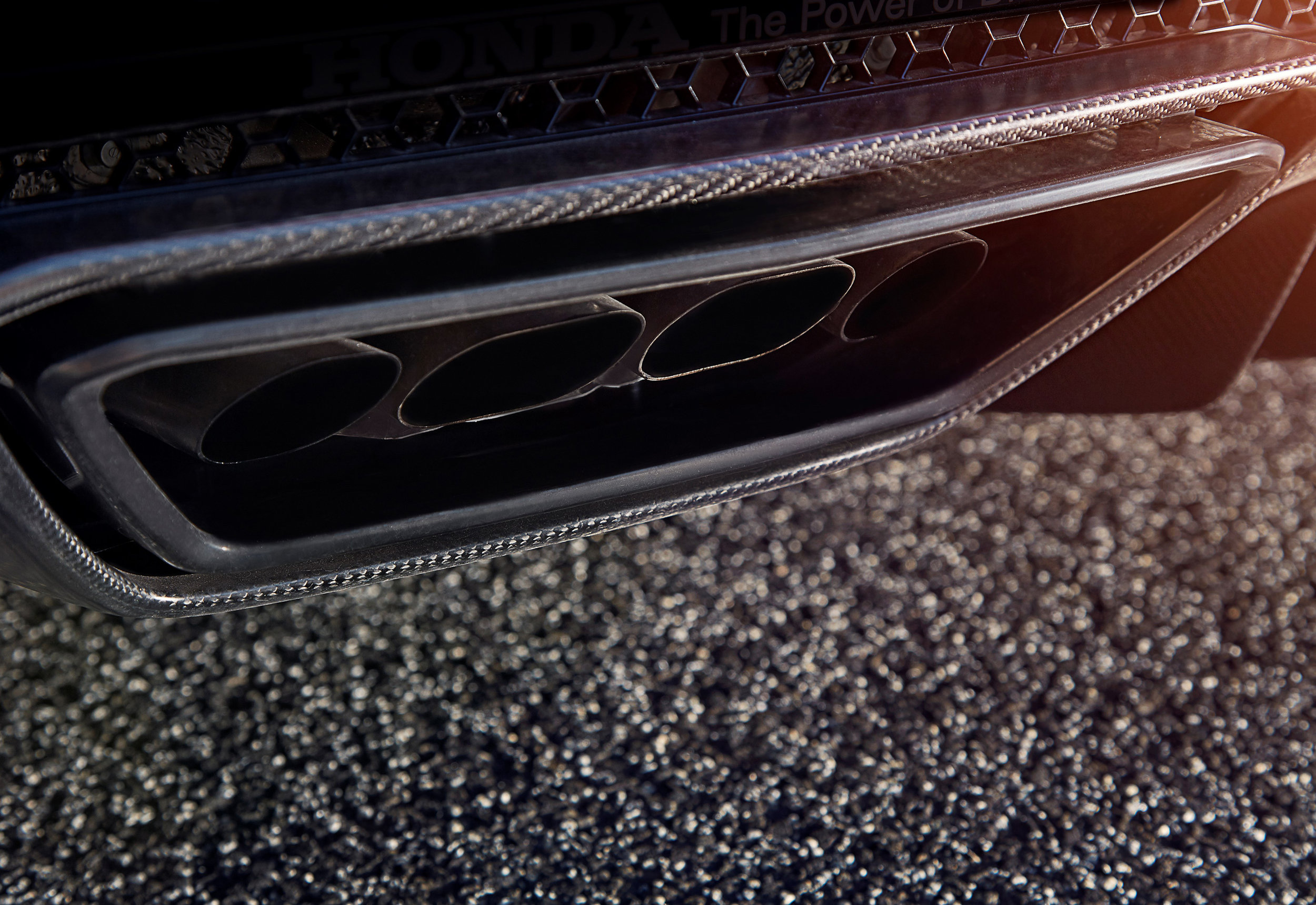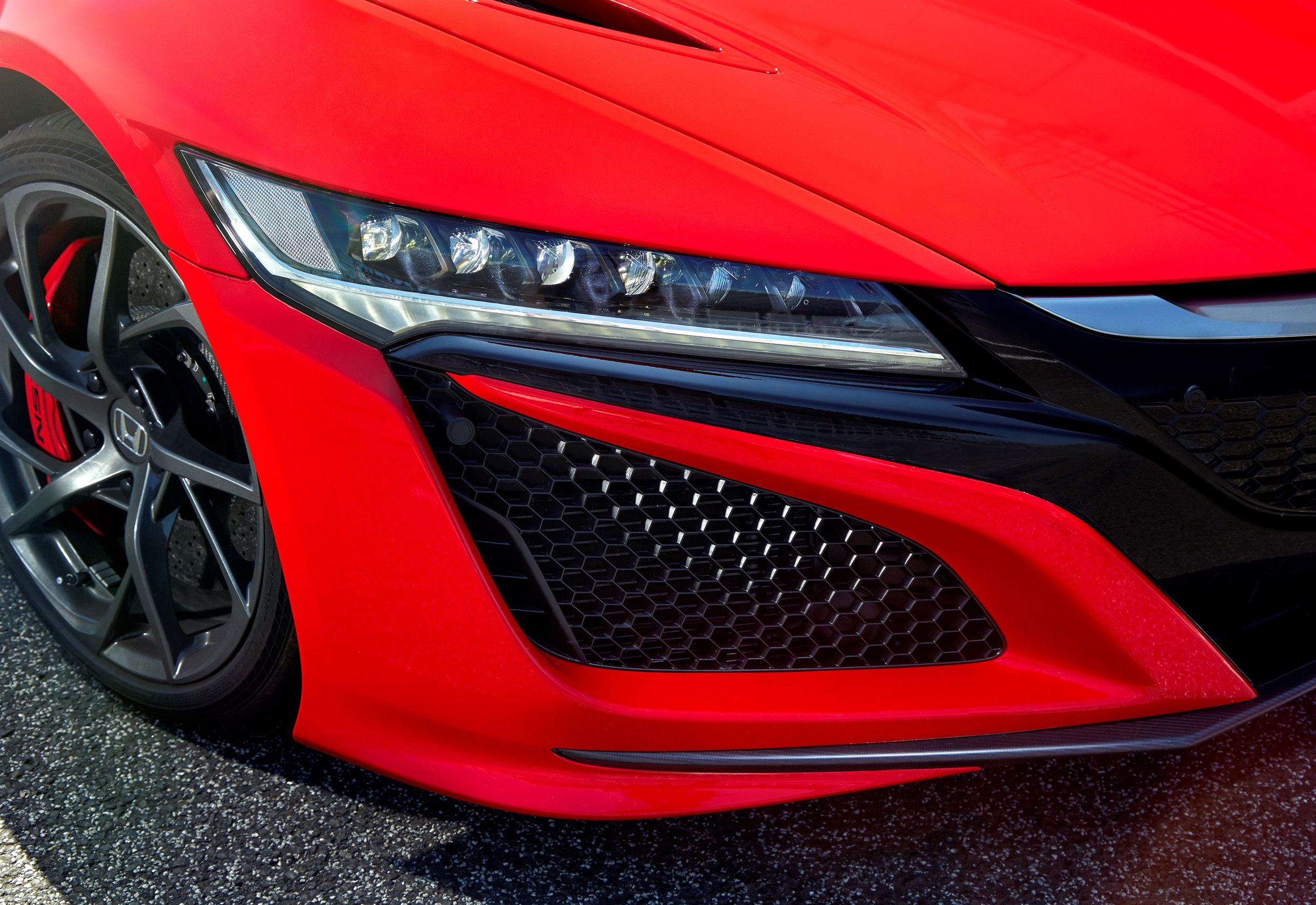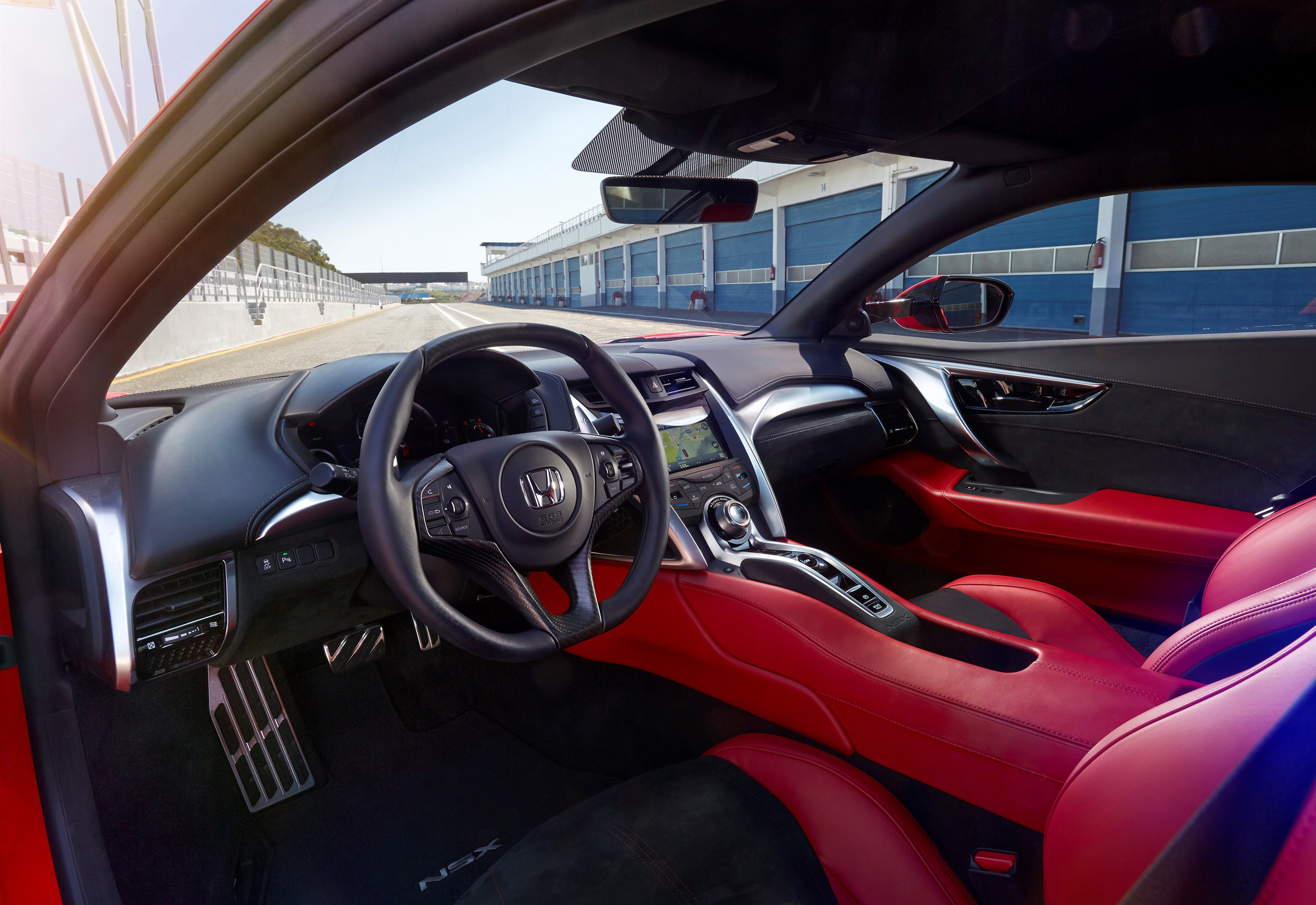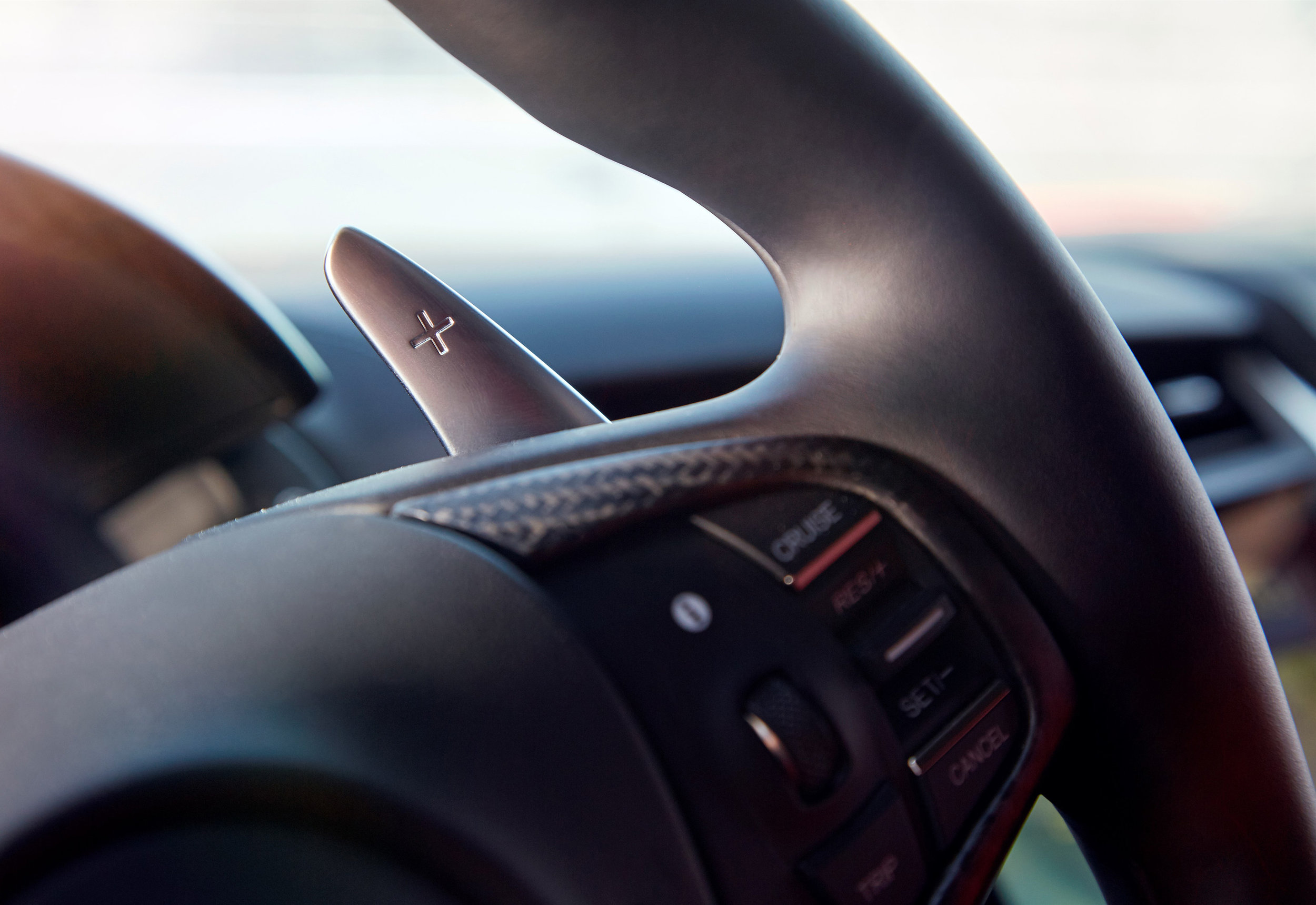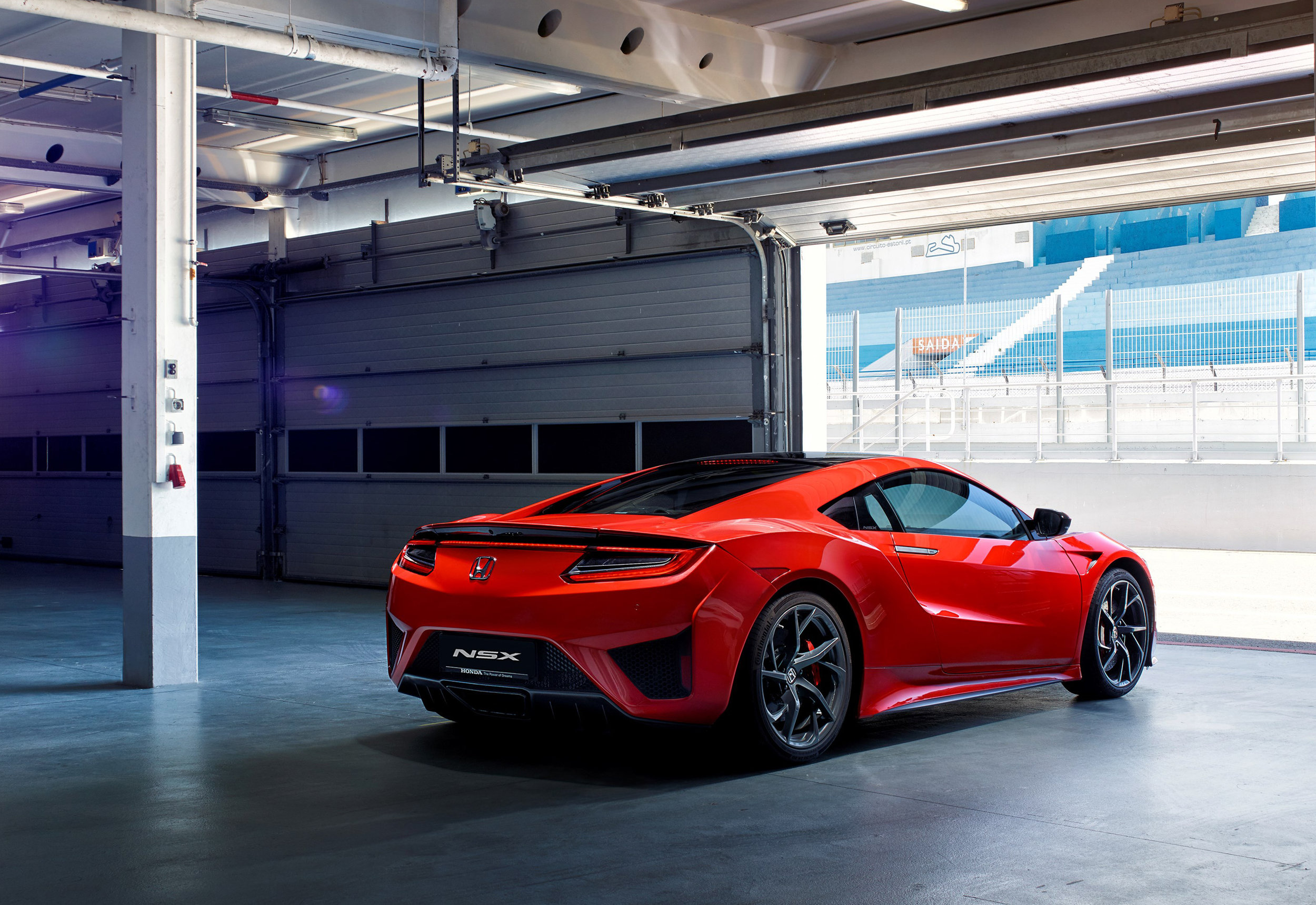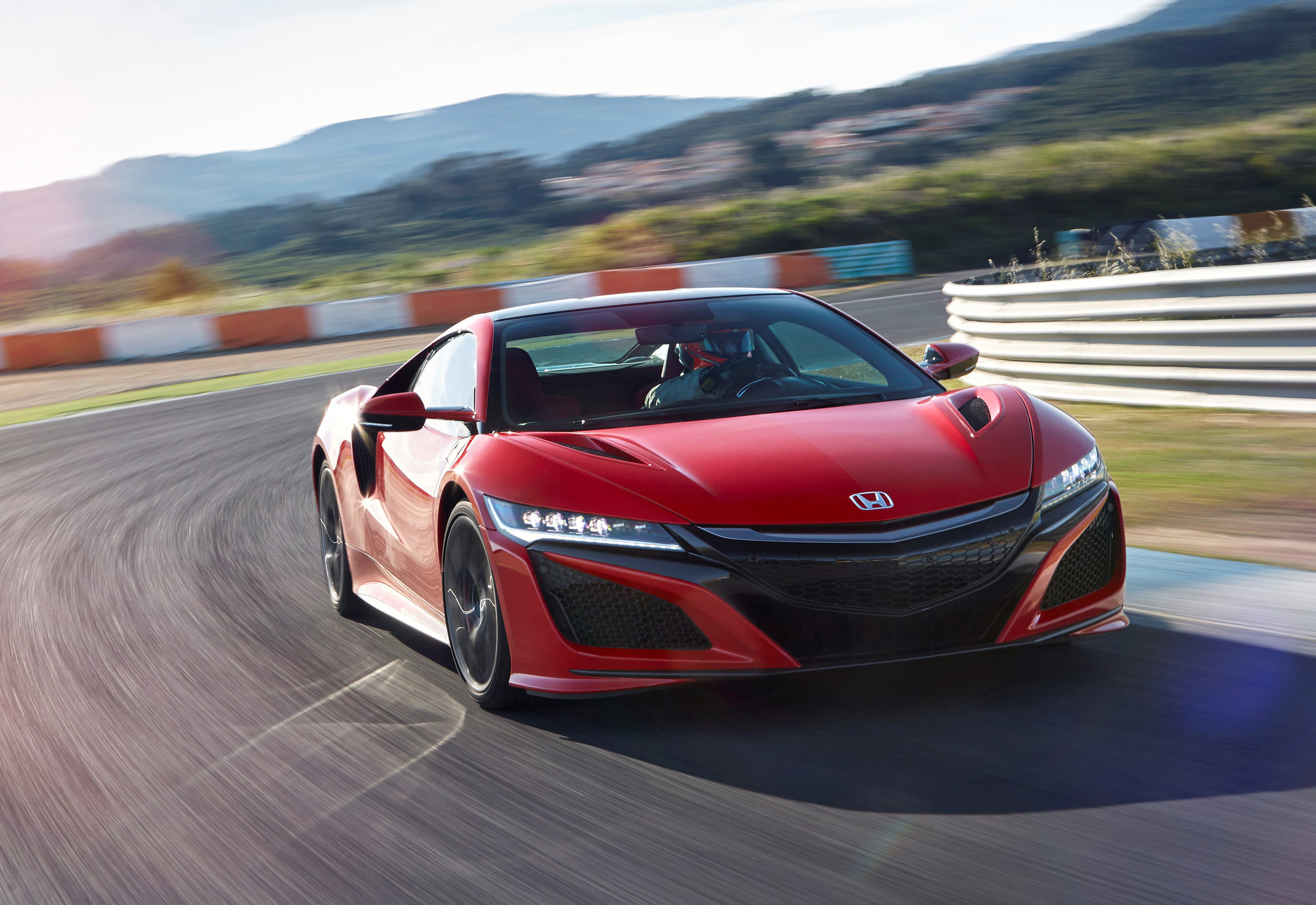Honda has revived a famous nameplate with the return of the NSX. Chris Pickering drives the eagerly anticipated supercar.
We’re blessed with a positive surplus of junior supercars at the moment. This month the new Honda NSX reaches our shores, with the likes of the Audi R8 Plus and the McLaren 570S firmly in its sights. Rarely have three such talented cars gone head to head. All offer a compelling blend of performance and usability, although each achieves it in a very different way.
The Honda takes an unashamedly high tech approach, with a twin turbocharged 3-litre V6 mated to no less than three different electric motors (two on the front, one on the back). This combination gives the NSX a total power output of 581 PS and peak torque of 650 Nm, along with four-wheel drive and torque vectoring. In many respects it’s more like a scaled down hypercar than a traditional supercar.
That said, things are refreshingly conventional when you first get in. The cabin may lack the sort of wow factor you’d hope for in a car that starts at £143,950 (in fact our well-specced test car was a whisker under £170,000) but the controls are all straightforward, well-laid out and intuitive to use. Visibility is good, the seats offer a great blend of comfort and support and the boot is more accommodating than you might expect from its meagre 110-litre capacity.
As befits a modern performance car there are a number of different drive modes to choose from, adjusting a wide variety of parameters. These include settings for the engine, gearbox, suspension, torque vectoring system and exhaust. There’s a Quiet running mode that restricts the car to electric power only whenever possible, Sport which is essentially the default setting, Sport+ which sharpens everything up and brings a bit more noise into the cabin and full-on Track mode where you’re on your own with regards traction and stability control. One thing you can’t do is adjust the settings individually, but we never honestly felt the need to mix and match.
On the move, the NSX draws upon its formidable arsenal of high tech features to deliver an unexpectedly analogue experience. Despite having two great big turbochargers strapped to it, the engine uses torque filling from the electric motors to banish virtually all sensation of turbo lag. The same technology also helps to give the NSX pin sharp throttle response and an uncannily linear torque curve. It may only red line at 7,500 rpm, but the usable rev range is so wide that you really do feel like you’ve squeezed every drop out of the V6 by the time it hits the limiter. It sounds good too, with a guttural V6 bellow, underscored by whooshes from the turbochargers and a faint whine from the electric motors.
Left to its own devices, the nine-speed dual clutch transmission shuffles the ratios efficiently and unobtrusively. It’s also lightning quick in manual mode, where the somewhat bewildering choice of ratios actually makes a good deal of sense; first is only intended for standing starts and ninth is purely for motorway cruising, so it’s essentially a seven speed ‘box. Less impressive are the plastic paddles themselves, which feel like they belong on a PlayStation and not a £170k supercar.
On paper, the 1,814 kg kerb weight is something of a concern. That’s like driving one Lotus Elise with another strapped on top of it. In reality, the weight of the batteries and electronics is placed very low and well towards the centre of car, while the Honda engineers have pulled off something approaching witchcraft with the suspension tuning and the torque vectoring system. The result is that the NSX changes direction with cat-like responses, yet it feels resolutely planted at higher speeds. Very occasionally you can sense the extra mass compared to something like a 570S, but the added stability of the four-wheel drive NSX makes it a price worth paying.
Even on the bumpy B-roads heading towards Goodwood, the NSX retained excellent composure. Despite its performance this really is a car you can thread down country lanes with confidence. It can’t quite match the ride comfort of the McLaren, particularly in Sport+, but it always felt stable and composed. Traction is predictably huge too; despite an autumnal sheen on the roads, the NSX just seemed to grip and go.
There’s yet more voodoo at work in the steering. The only clue to the fact it’s a variable ratio system is that your hands never seem to leave the wheel; even on the tightest bends they remain fixed in position. It’s responsive, nicely weighted and communicative.
Also worthy of note are the brakes. Hybrid systems are notorious for issues with pedal feel, but the NSX is something of a masterclass in this regard, providing crisp responses and vast reserves of stopping power.
Make no mistake, this is a hybrid that’s built for speed, not some plug-in eco chariot. We struggled to better 20 mpg in mixed driving and CO2 emissions of 228 g/km still put it in the second highest road tax bracket. On the other hand, it is a staggering achievement for a car that’s also good for 190 mph and 0-60 mph in under 3 seconds!
From a technical perspective, then, the NSX is unquestionably the most accomplished car in its class. It’s also a very good sports car by any measure, delivering performance and involvement worthy of its price tag. Clichéd as this may sound, the fact it’s perhaps not quite as visceral as a 570S or as tuneful as the V10-engined R8 really is a reflection of the strength of the field. All three are hugely accomplished. Another thing that works in the Honda’s favour is its rarity value. Just 60 examples are bound for the UK in the first 12 months and only 40 the year after that; all of which are now sold out.
In a market where exclusivity counts, that might just clinch it.


